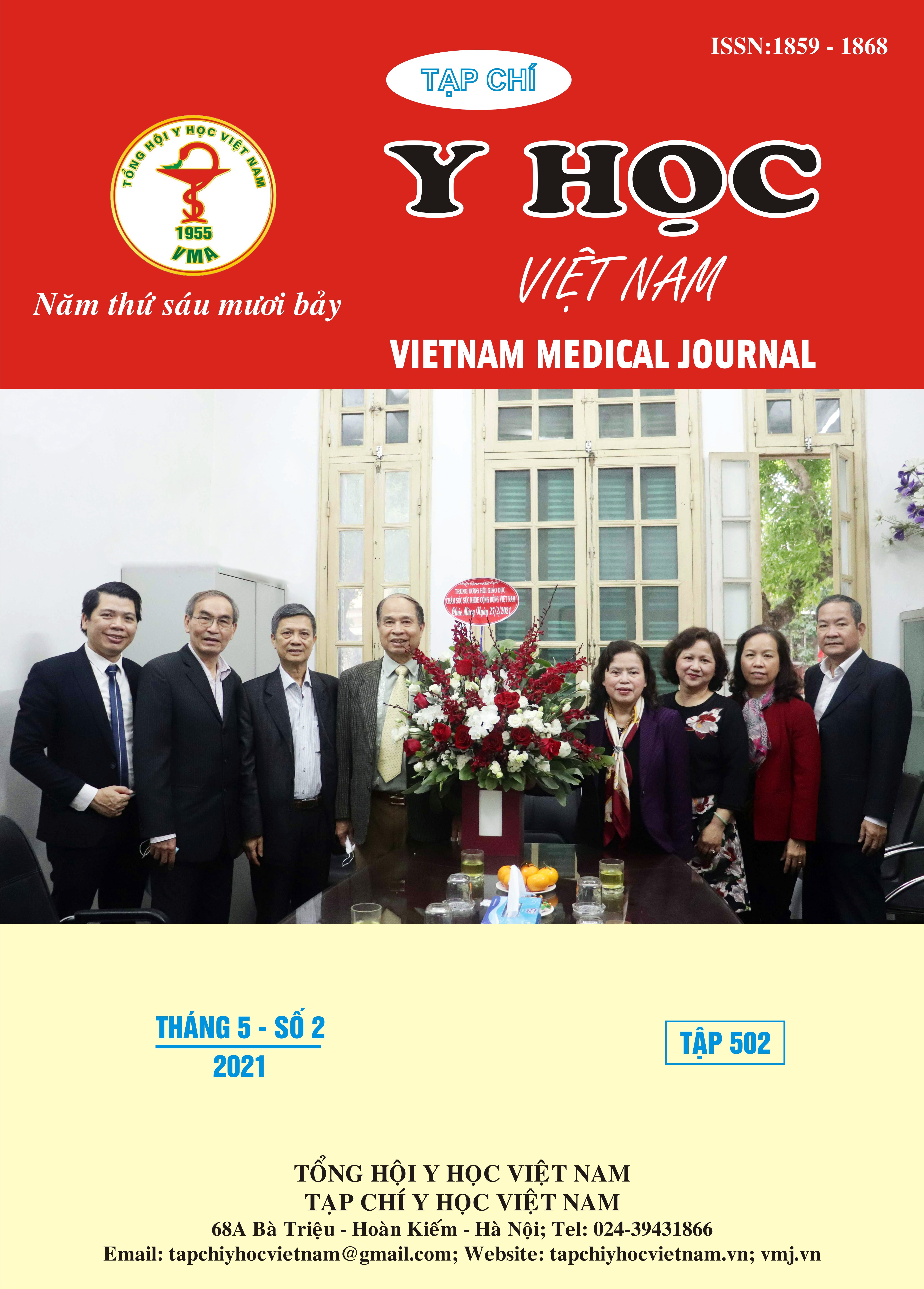EVALUATING THE TREATMENT OUTCOMES OF DEFINITIVE CONCURRENT CHEMORADIOTHERAPY (dCRT) FOR PATIENTS WITH STAGE III ESOPHAGEAL CANCER (EC)
Main Article Content
Abstract
Objective: To evaluatethe treatment outcomes of definitive concurrent chemoradiotherapy (dCRT) for patients with stage III esophageal cancer (EC) and comment on several side effects of the treatment. Subject and methods: A descriptive retrospective combined prospective study on42 patients with stage III esophageal cancerreceiving IMRT or 3D – CRT radiation therapy (dose are typically 50.4 Gy forprophylactic radiotherapy and around 60 – 66 Gy of radiotherapy for primary tumor and lymph node regions) in combination with weekly PC regimen(the Paclitaxel dose was 50 mg/m2 in combination with Carboplatin administered the dose at AUC2 on day 1 of weekly cyclesduring radiotherapy period).Evaluationof the treatment outcomesand the side effects is performed 4weeks after the completionof dCRT that based on clinial examination and CT imaging according to RECIST 1.1. Results: The overall clinical response rate after treatment reached 90.5%. The overall objective response rate according to RECIST 1.1 was 85.7% with 33.3% of the patients achieving complete response. There was no progression after treatment during follow – up and evaluation. Several factors related to the treatment outcomes include T stage (stage T2 response was significantly better than stage T3, p = 0.023), N stage (stage N1 response was significantly better than stage N2, p = 0.001), tumor size (the response of small tumors is significantly better than of large ones, p = 0.033), radiotherapy techniques (IMRT is significantly better than 3D – CRT, p = 0.006).The most common major radiotherapy – induced side effects were dermatitis (61.9%), esophagitis (38.1%), pneumonitis (11.9%). Most of common major hematologic and nonhematologic toxic effects were at grade 1 and 2. Just 2.4% of the patients suffered from severe neutropenia (grade 3). Conclusion: dCRT with weekly PC regimen is the effective, safe and less toxicity treatment for patients with unresectable stage III esophageal cancer.
Article Details
Keywords
Definitive concurrent chemoradiotherapy, stage III esophageal cancer
References
2. NCCN (2020), “Esophageal cancer”, Clinical Practice Guidelines in Oncology.
3. Hàn Thị Thanh Bình (2004), “Nhận xét đặc điểm lâm sàng, mô bệnh học và kết quả điều trị ung thư biểu mô thực quản tại Bệnh viện K giai đoạn 1998 – 2004”, Luận văn tốt nghiệp bác sĩ nội trú, Đại học Y Hà Nội.
4. Nguyễn Đức Lợi (2015), “Đánh giá hiệu quả phác đồ hoá xạ trị đồng thời và một số yếu tố tiên lượng ung thư biểu mô thực quản giai đoạn III, IV tại bệnh viện K”, Luận án tiến sĩ y học, Đại học Y HN.
5. Horning J., Smit J. K., Muijs C. T., et al. (2014), “A comparison of Carboplatin and Paclitaxel with Cisplatinum and 5-Fluorouracil in definitive chemoradiation in esophageal cancer patients”,Ann Oncol, 25(3), pp.638.
6. Münch S., Pigorsch S. U., Feith M., et al. (2017), “Comparison of neoadjuvant chemoradiation with carbolatin/paclitaxel or cisplatin/5-Fluoruracil in patients with squamous cell carcinoma of the esophagus, Radiant Oncol LondEngl, pp.12.
7. Kaneko K., Ito H., Konishi K., et al.(2003), “Definitive chemoradiotherapy for patients with malignant stricture due to T3 or T4 squamous cell carcinoma of the oesophagus”, Br J Cancer, 88(1), pp.18-24.
8. Ito M., Kodaira T., Tachibama H., et al.(2017), “Clinical results of definitive chemoradiotherapy for cervical esophageal cancer: Comparison of failure pattern and toxicities between intensity – modulated radiotherapy and 3 – dimensional conformal radiotherapy”, Head neck, 39 (12): pp.2406-2415.


